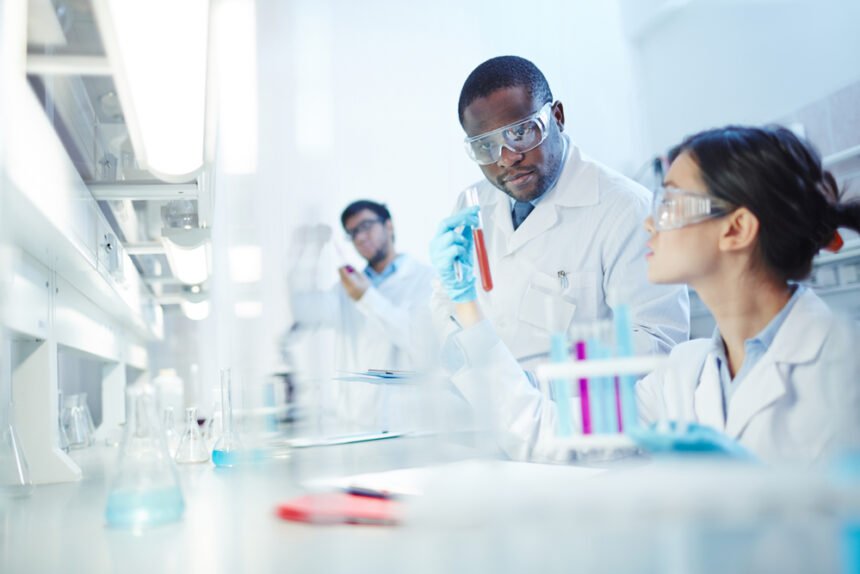Now is the best time to evaluate the laboratory safety procedures. This can be a daunting task especially for large facilities, but it is something necessary. No matter the size of your lab, the tips below have been put together by scientists and are going to help with laboratory safety. After reviewing these tips, you can start implementing them by doing a simple audit. Have a checklist of all the 10 and see if there is compliance. Does the lab comply with all of them? If so, then great job. If the lab doesn’t comply with all of them, don’t worry. There’s a good overview here. Use the tips below to ensure safety in the lab.
No Food or Drink in the Lab
This is a common habit in the lab and it can be the hardest to deal with. Everyone likes having a bottle of water or cup of coffee as they work. There are many benefits of removing food and drinks from the laboratory. The first benefit is it reduces distractions. Any distraction is bad in the lab, especially when performing critical tasks. Make sure you have removed all distractions from the lab to prevent injury. Food wastes are usually messy. This increases the risk of contamination and reduces efficiency. This is a safety practice that needs to be observed when in the lab. There was a case where a student died after accidentally drinking a saline solution that contained sodium azide.
Working with a Lab Partner
It is not always possible to have a partner when performing duties or experiments. If possible, have someone else working with you in the lab. When there are two sets of eyes, it is more likely to notice a slip-up or mistake. Everyone makes mistakes, that is just human nature. Working with others is going to help keep each other in check. If someone is injured, it allows a quick response.
Using Warning Signs
Everything that poses a threat should be labeled and very visible! This is very important. Bold lettering, bright colors, and placing it on the prominent locations is a must. The warning signs can be outside of the standard places. The chemicals and solutions in the lab must be marked by OSHA guidelines. What about trip hazards? High-decibel noise areas? Circuit breakers? Electricity is in every lab that has equipment and instruments. The breakers should be marked clearly. It is important to have warning labels and markings to keep everyone in the lab safe.
Budgeting for Lab Safety Equipment
The key to any laboratory safety plan is maintaining a strict budget. Make sure you side aside funds for safety equipment when revising current spending or drafting a new budget. the items needed include protective gloves, safety glasses and goggles, eyewash stations and solutions, splash guards, earplugs, fire extinguishers, lab coats, and many more. The cost of purchasing and maintaining safety measures can be costly. The most important thing is the safety and well-being of the personnel. When you budget for such things, then it removes future funding concerns where you are forced to decide the most important thing.
You should also consider the costs associated with training. You can expect some production downtime during training courses. Paper handouts, props, and hourly wages all add up. Keep these costs in mind as you budget for the safety measures.
Storing Flammable Chemicals in Fireproof Cabinets
Everyone knows how dangerous fire is. It is important to ensure all flammable chemicals, aerosols, and solvents have been secured in a fireproof cabinet. Don’t leave them out in the open because they can end up in a disaster. Always keep in mind the warning signs. Have reminders everywhere flammable items are used. There are some reminders that might seem obvious, but it is still important to put them up just to be on the safe side. This can be one of the items on your daily inventory management inspection.
Creating a Laboratory Safety Manual
When most organizations bring in new staff, they usually provide an employee handbook or some type of policy guideline. You should consider providing a lab safety manual. When you take the time to draft a clear and concise policy, you will be creating something that is going to be a handy reference, and it also reduces liability if termination has to occur. Ask them to read the manual and then sign to make it clear they have understood and they are going to follow the rules. If an employee keeps disregarding these rules, then you can decide to terminate them. The signature on their document is going to show they read and understood the rules they have to follow in the lab. This is going to help you if the issue ends up as legal proceedings.
Conducting Unannounced Inspections
There is no point in having policy and procedures then leaving them unchecked. Have a safety audit checklist and do routine inspections. It is good to make the inspections random and unannounced because it will remove the option of personnel “tidying up” because they know the inspection is about to be done. No one likes it random, but it has to be done because safety is always the priority. With time, the lab is going to have safety training and inspections which results in good habits.
Practicing Routine Safety Drills
Elementary schools usually have safety drills that come as a surprise for most. Many kids don’t know the importance of these drills. They prepare the kids for the worst-case scenarios and emergency disasters. If something wrong happens, then the kids are prepared because they have the training and knowledge needed for that situation. Nothing changes from elementary schools. Ongoing safety practices are very important for any company or organization. Regular drills are important because they prepare the staff and students for emergencies. Identifying meeting areas, emergency exits, and individuals who are going to help in guiding if evacuation is needed. Everyone needs to be aware of the plans. Literature or handouts can also help. Many lab managers don’t want to ever deal with an emergency. Preparation is half the battle.
Delegating Tasks
Lab managers and supervisors have to do this. This is a good way of ensuring everything runs efficiently in the lab. The team members should be assigned various duties to help in keeping the lab safety protocols in place. While someone is keeping inventory of chemicals, the other is making sure warning signs are present. Spreading out the responsibility is going to give you the chance of focusing on the bigger picture. Delegation, training, and inspection are all you are going to do once everything has been dealt with by the team members.
Encouraging and Promoting Personal Safety
Positive motivation and excitement are very effective. Most people don’t enjoy thinking about laboratory safety. You can change this by adding a little personality and planned pep talks and sharing personal experiences with your team. You can also choose to share with them examples of mistakes that you have made in the past. This works because you become real and relatable. Having fun while doing something considered boring is good. Find ways of incorporating humor when talking about safety in the lab. The team members are more likely to remember what you said.








